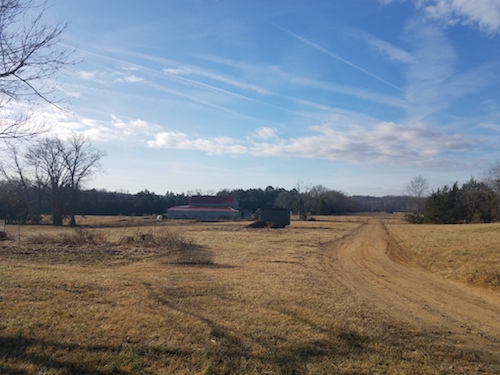The Farm is Alive!
This week has been a welcome break in the weather for everyone on the farm, human and animal alike! Our chickens are laying more eggs, our pigs are more cheerful and less ravenously hungry, and the wildlife has been visible and abundant!
One species that seems particularly transformed by this warm spell is the robin. A week ago, the air was completely silent. Now, it is a cacophony of robin chirping and chattering. On an evening walk through the cow pastures, we were astounded by the sheer number of them. I tried to estimate how many there were by counting the ones in a square of field and multiplying out by how many squares I felt there were. I came up with over 2000 robins!
Hawks, eagles, and vultures are also much more active right now. I figure that the thaw is creating new food opportunities for them that they are glad to take advantage of after leaner times. Red-tailed hawks can be seen over the barn every day, looking for rats and chickens that stray too far from under the hawk lines. On a trip out to the pigs, I disturbed a roost of vultures. They then circled overhead for several minutes, attempting to come back in for a landing.
Our resident bald eagles have been spotted all over the farm, but especially at the site of last year’s nest, which I am hopeful they will use again. Eagles have one of the earliest breeding seasons of any bird, which makes sense because they have to raise up a very large nestling! January is the time of year that they begin reinforcing their bonds with their partner. Then they will lay their eggs, which will hatch in March. Eagles lay between 1 and 3 eggs, but it’s almost always 2. Then usually the weaker sibling will die and one will survive. Last year, our resident eagles raised 2 chicks to full adulthood! It must have been all of the free-range chicken they were eating…..
And last, but certainly not least, there was a bobcat sighting on the farm! It was skulking in the pick-your-own field, no doubt scoping out the chickens! It seems that everything likes to eat chicken! I heard recently that this is the most likely time of year to see bobcats, so keep your eyes open!
If you want to learn more about robins and eagles, or any other bird, Cornell Lab of Ornithology has an incredible free resource in their All About Birds pages. They have photos, sounds, ID tips, and life histories for every species! I am not sure on such an exhaustive list for mammals or other animals, so let me know if you know of one.
We would love to hear stories of what wild creatures you have encountered on the farm, so please share with us!

